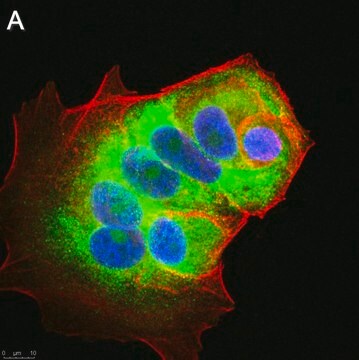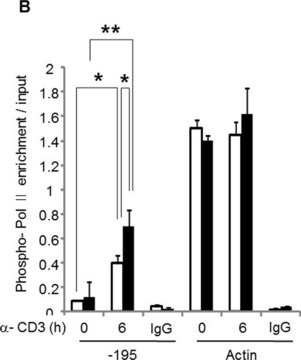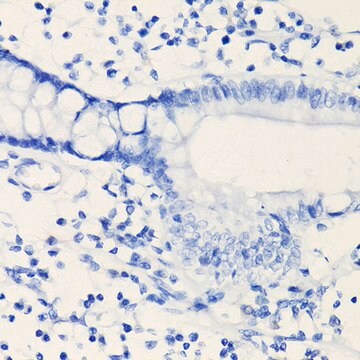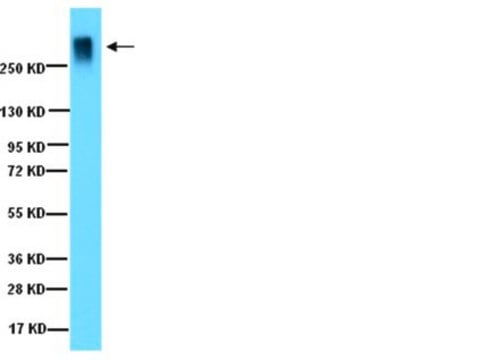MABC1152
Anti-LINE-1 ORF1p Antibody, clone 4H1
clone 4H1, from mouse
Synonim(y):
LINE-1 retrotransposable element ORF1 protein, L1ORF1p, LINE retrotransposable element 1, LINE1 retrotransposable element 1
About This Item
Polecane produkty
pochodzenie biologiczne
mouse
Poziom jakości
forma przeciwciała
purified antibody
rodzaj przeciwciała
primary antibodies
klon
4H1, monoclonal
reaktywność gatunkowa
human
metody
immunocytochemistry: suitable
immunohistochemistry: suitable (paraffin)
immunoprecipitation (IP): suitable
western blot: suitable
izotyp
IgG1κ
numer dostępu UniProt
docelowa modyfikacja potranslacyjna
unmodified
informacje o genach
human ... L1RE1 (4029)
Opis ogólny
Specyficzność
Immunogen
Zastosowanie
Immunocytochemistry Analysis: A representative lot detected LINE-1 ORF1p in Immunocytochemistry applications (Taylor, M.S., et. al. (2013). Cell 155(5):1034-48).
Immunoprecipitation Analysis: A representative lot detected LINE-1 ORF1p in Immunoprecipitation applications (Taylor, M.S., et. al. (2013). Cell 155(5):1034-48).
Western Blotting Analysis: A representative lot detected LINE-1 ORF1p in Western Blotting applications (Taylor, M.S., et. al. (2013). Cell 155(5):1034-48).
Apoptosis & Cancer
Jakość
Western Blotting Analysis: A 1:1,000 dilution of this antibody detected LINE-1 ORF1p in 10 µg of MCF7 cell lysate.
Opis wartości docelowych
Postać fizyczna
Przechowywanie i stabilność
Inne uwagi
Oświadczenie o zrzeczeniu się odpowiedzialności
Nie możesz znaleźć właściwego produktu?
Wypróbuj nasz Narzędzie selektora produktów.
polecane
Kod klasy składowania
12 - Non Combustible Liquids
Klasa zagrożenia wodnego (WGK)
WGK 1
Temperatura zapłonu (°F)
Not applicable
Temperatura zapłonu (°C)
Not applicable
Certyfikaty analizy (CoA)
Poszukaj Certyfikaty analizy (CoA), wpisując numer partii/serii produktów. Numery serii i partii można znaleźć na etykiecie produktu po słowach „seria” lub „partia”.
Masz już ten produkt?
Dokumenty związane z niedawno zakupionymi produktami zostały zamieszczone w Bibliotece dokumentów.
Nasz zespół naukowców ma doświadczenie we wszystkich obszarach badań, w tym w naukach przyrodniczych, materiałoznawstwie, syntezie chemicznej, chromatografii, analityce i wielu innych dziedzinach.
Skontaktuj się z zespołem ds. pomocy technicznej








